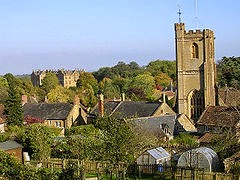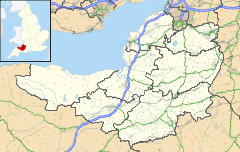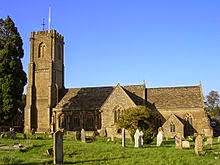Our wonderful author, Stuart Miller-Osborne has, apart from writing a fantastic article, also set us all a challenge. It is a fascinating article and I am going to do some research of my own and see what I can come up with. Please e-mail us at hungerfordarcade@btconnect.com if you can find anything and I will forward them onto Stuart so that he can write about what has been discovered. We are really looking forward to hearing from you.
Rita
Thomas Shoel (1759-1823)
Things Never Found
Here is a challenge for you. As readers, you will know I occasionally write the series “Things Often Found” about items you are likely to come across when visiting antique shops and the like.
Well your challenge, if you choose accept it, is to see if you can find anything written by an amazing but totally forgotten man called Thomas Shoel (1759-1823) who wrote poetry and composed hymns and sacred music throughout his sixty four years.
Your task could be called “Things Never Found “
What is so special about Tom Shoel you may ask? Well Tom was one of those amazing breed of people who without any formal training was able to master his gifts, possibly without recognising how powerful they actually were.
Alfred Wallis, the Cornish artist and to a lesser extent our very own Alfred Williams are good examples. Men who had none of the advantages of life, yet through pure willpower managed to pursue their God given talents.
But who was Tom Shoel? Well I was lucky, I came across Tom many years ago when visiting Montacute in Somerset after reading about him previously on my journey from London.
I read of this man who wrote poetry and was a composer of sacred music and hymns yet had received no training at all. His schooling was non-existent. He was in short an illiterate labourer from a small village in Somerset and would have remained so but for his unique vision.
Tom Shoel was a labourer, a hedger and a ditcher, a man who would have been as familiar in the Somerset of some two hundred years ago as cars are today.
There were a lot of Tom’s working in the West Country living demanding yet unremarkable lives, marrying, having lots of children and passing into history in some quiet churchyard usually at a rather young age.
Their lives were most probably not celebrated by a headstone, maybe a wooden cross which would have rotted away in the years following their passing.

Today their final resting places might possibly be noted as grassy mounds of raised earth in the outreaches of the shadow of the church or they are totally lost in the geography of the churchyard.
Who knew these men and women who lived and died in obscurity and whose names are not remembered?
Yet for every George or Emma or Tom there is a descendant who is living today. Maybe they are still in Somerset or they might have migrated elsewhere.
Tom Shoel is likely to have descendants living somewhere in the West Country but I wonder if they know much about him or has history obscured his memory.
The village of Montacute is some four miles west of Yeovil and from a literary perspective is best known for its connections with the Powys family.
The Reverend Charles Powys (1843-1923) who was the vicar of the village between 1885 and 1918 was the father of the writers John Cowper Powys (1872-1963), Llewelyn Powys (1884-1939) and Theodore Francis Powys (1875-1953).
Indeed their sister Philippa Powys (1886-1963) was born in Montacute.
It was however, through Llewelyn in his Somerset Essays that I first discovered Tom Shoel.
When I visited the village over thirty years ago it appeared to be more or less the same as it would have been in Tom’s time. Obviously, roads would have replaced, the lanes of the area and the rural industries even in the 1980s were a thing of the past.
No hedgers or ditchers would have survived their occupations long dead.
Unlike the Powys brothers and sister, Tom was born into poverty in 1759. His parents died when he was quite young and he would have been learning his trade of hedging and ditching from a very early age.
He was a candidate for a short life of toil and misery as were his fellows.
Today we look on these years with a slight nostalgia. But times were hard in rural areas. If you were born into poverty you most likely would live, marry and die in poverty.
It was said of Tom that he grew up “with music in me head”. At an early age he was given a tin whistle and from that he composed tunes. As with most country folk, Tom went to church and gradually learnt to read from the Bible.
But he did not stop there as he taught himself to write in a beautiful copperplate (which strangely enough I was taught at school – although I am long lapsed).
Tom wandered in the surrounding countryside and explored the lanes surrounding his village. This inspired him and with his inner music he found his expression in music, hymns and poetry.
To the ordinary people of the village, (who could not understand him) he was considered a harmless eccentric.
He married (as far as I can see) at a young age and had a number of children. Sadly his wife (worn out by childbirth) and all of his children with the exception of one son, died quite early on.
This caused a great shift in Tom’s life. It appears that his music and poetry became more melancholic and maybe a painful maturity began to show through.
Tom married again when he was nearly forty but happiness was to desert him again as his wife killed herself some years later.
This was through no fault of Tom. The poor woman was just worn down by the appalling demands made on her and just ended her life to escape her misery.
For the second time,Tom was grieving for a lost wife and his misery was added to by unhappy mutterings in the village stating that he should give up his writing and concentrate on his rural duties. Maybe some of the tongues blamed him for the family tragedies he had endured.
As he grew older,Tom devoted a great deal of time to his passion. In reality he was living just above the breadline.
There was a brief light in the rural night when an enlightened clergyman arranged for some of his music and poems to be published in Bristol. But any hopes of success were dashed as he made little money.
His talent was brought to the attention of certain literary figures of the day but sadly they ignored him.
Tom became more and more eccentric. He would walk around the village talking to himself (this was most probably Tom working out his poems and music).
He would often walk to Bristol living off of the land with the hope of selling a hymn or a poem and was noted as wearing a rough coat with a new hymn or poem in the pocket during these visits.
All this for a sale of a few pennies.
When his work was read it was thought that he had plagiarised other works as a simple labourer would not have been able to write music ,hymns or poetry to such a standard, or so people thought.
Sadly, I have not really read much of Tom’s work but the short pieces I have read were astounding. True, the structure of some of his work could be seen as naive and his spelling was at times worse than mine, but what shone out was the intensity that looking from a modern perspective could be seen as a direct gift from God as it was so original.
If Alfred Wallis had not been discovered towards the end of his life then his paintings would most certainly have suffered the same fate as Tom’s written works which is sad.
In short he was not understood by those around him. It was observed that “He gets it from above” by more than one person. He was a remarkable man possibly born a century early. Maybe if he had been a contemporary of the Powys brothers and sister then his story would have been different and he would have been more celebrated. They would have surely have taken him under their wings as the St Ives School took Wallis into their fold.

If you want to read more about Thomas Shoel, then the chapter in Somerset Essays by Llewelyn Powys is a good place to start. There was a short piece written by David Foot in 1985 which was very informative and helped me in my researches.
Or on the other hand, you could look on the internet to find out more about this interesting man. You might want to motor down to Montacute and look at Tom’s village for yourself.
I doubt if it has changed much since my visit in 1981. Who knows, Tom might be more celebrated today in the village than he was thirty odd years ago. It would be nice to think that he was.
At the start of this article, I set a challenge.The next time you are looking through anything remotely connected with Somersetshire in the early part of the nineteenth century or even the late eighteenth century then look to see if tucked away there is any of Tom’s music or a hymn composed by him or maybe even a poem.
On a dusty bookshelf you might find a copy of one of his volumes of poetry (there were several) or some of his hymns or sacred music. I have been looking for thirty years without even a sniff.
Stuart Miller-Osborne
For all the latest news, read the latest edition of our Newsletter at www.hungerfordarcade.co.uk

